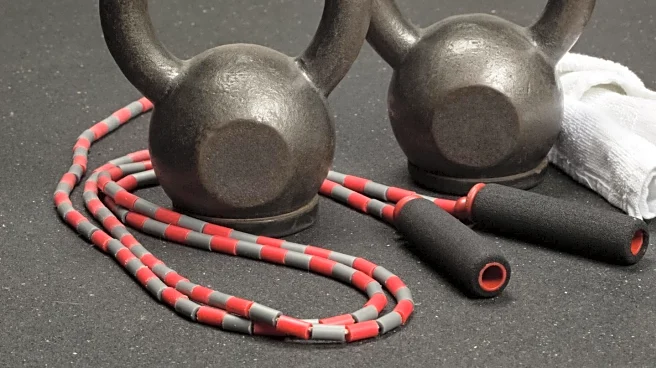What's Happening?
Dr. Tania Elliott, a prominent US doctor, has highlighted the health benefits of a 30-minute interval walk, suggesting it may be more effective than the traditional goal of 10,000 steps. According to Dr. Elliott, interval walk training, which involves alternating between different speeds, can significantly improve aerobic capacity, CO2 max, leg muscle strength, and lower blood pressure. This approach is based on research from Japan, which indicates that engaging in interval walk training at least four days a week can yield substantial health improvements. Dr. Elliott shared these insights in a video on Instagram, emphasizing the efficiency and effectiveness of shorter, more intense walking sessions compared to longer, steady-paced walks.
Why It's Important?
The recommendation from Dr. Elliott challenges the widely accepted notion that walking 10,000 steps a day is the optimal target for health benefits. By advocating for interval walk training, Dr. Elliott is promoting a more accessible and potentially more effective exercise regimen that could benefit a broader segment of the population. This approach may particularly appeal to individuals with busy schedules who find it difficult to allocate time for longer walks. The emphasis on interval training aligns with growing evidence supporting high-intensity workouts for cardiovascular health and muscle strength, potentially influencing public health guidelines and personal fitness routines.
What's Next?
As Dr. Elliott's recommendations gain traction, there may be increased interest in interval walk training among fitness enthusiasts and healthcare professionals. This could lead to further research into the specific benefits of interval walking and its long-term effects on health. Fitness apps and wearable technology might also begin to incorporate interval training features to help users track and optimize their walking routines. Additionally, public health campaigns could start to include interval walking as a recommended exercise, potentially shifting the focus from step count to exercise quality.
Beyond the Headlines
The shift towards interval walk training reflects a broader trend in fitness and health towards personalized and efficient exercise routines. This approach not only caters to individual fitness levels but also encourages a more mindful engagement with physical activity. The cultural shift from quantity to quality in exercise could have long-term implications for how society views health and wellness, potentially reducing the stigma around shorter workouts and promoting a more inclusive approach to fitness.










